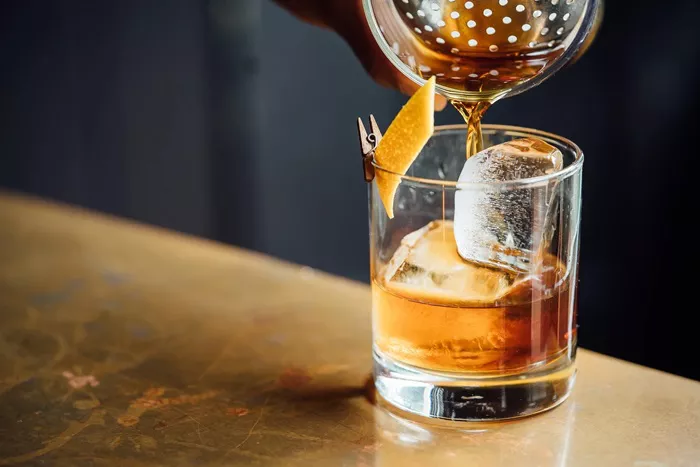Brandy is a delightful and sophisticated spirit enjoyed worldwide. It’s made by distilling wine, which concentrates the flavors and alcohol content. The process involves several key steps: selecting the grapes, fermenting the wine, distilling the liquid, aging the spirit, and finally, bottling it. Let’s explore each step in detail.
Step 1: Selecting the Grapes
The journey of making brandy begins in the vineyard. The choice of grapes is crucial because it affects the flavor and quality of the final product. While many types of grapes can be used, certain varieties are preferred:
Ugni Blanc (Trebbiano): Commonly used in Cognac.
Colombard: Often used in Armagnac.
Folle Blanche: Known for producing fine brandies.
The grapes should be harvested at the right time to ensure they have the right balance of sugar and acidity.
Step 2: Fermenting the Wine
Once the grapes are harvested, they are pressed to extract the juice. This juice is then fermented to produce wine. During fermentation, yeast converts the sugars in the grape juice into alcohol. This process can take several days to a few weeks. The resulting wine is usually dry and has a low alcohol content, typically around 8-12%.
Step 3: Distilling the Wine
Distillation is the process that transforms wine into brandy. It involves heating the wine to separate its components based on their boiling points. Here’s how it works:
Heating: The wine is heated in a still, usually made of copper. As it heats, the alcohol and other volatile compounds evaporate.
Condensation: The vapors rise and are collected in a condenser, where they cool and return to a liquid state.
Separation: The liquid collected is divided into three parts: the heads (first part), the heart (middle part), and the tails (last part). Only the heart, which contains the best flavors, is used to make brandy.
There are two main types of stills used:
Pot Stills: Traditional and used for producing rich, full-bodied brandies.
Column Stills: More modern and efficient, producing lighter and cleaner brandies.
See Also: Is Captain Morgan Spiced Gold Rum?
Step 4: Aging the Brandy
After distillation, the brandy is clear and quite harsh in flavor. Aging smooths and develops its character. The brandy is aged in wooden barrels, typically made of oak. The aging process involves several factors:
Barrel Type: The type of wood and the size of the barrel affect the flavor. Oak is preferred because it adds desirable flavors like vanilla and spice.
Time: The longer the brandy ages, the more complex and smooth it becomes. Some brandies are aged for several decades.
Environment: The storage conditions, such as temperature and humidity, influence the aging process.
During aging, the brandy absorbs flavors from the wood and undergoes chemical changes. The spirit also loses some alcohol and water through evaporation, known as the “angel’s share.”
Step 5: Blending and Bottling
Once the brandy has aged sufficiently, it’s time for blending and bottling. Master blenders may mix different brandies to achieve a consistent flavor profile. This step requires a great deal of skill and experience. The blended brandy is then diluted with water to the desired alcohol content, usually around 40% ABV (alcohol by volume).
Finally, the brandy is filtered and bottled. The bottles are sealed and labeled, ready for distribution and enjoyment.
Types of Brandy
Brandy comes in various styles and types, often named after their region of origin. Some popular types include:
Cognac: Made in the Cognac region of France, known for its elegance and complexity.
Armagnac: Produced in the Armagnac region of France, often richer and more robust than Cognac.
Calvados: A type of apple brandy made in the Normandy region of France.
Grappa: An Italian brandy made from grape pomace (the skins, seeds, and stems left after winemaking).
Pisco: A South American brandy, primarily from Peru and Chile, made from specific grape varieties.
Enjoying Brandy
Brandy can be enjoyed in various ways:
Neat: Served at room temperature in a snifter glass to concentrate the aromas.
On the Rocks: Poured over ice for a chilled, diluted experience.
Cocktails: Used in classic cocktails like the Sidecar, Brandy Alexander, and Old Fashioned.
Cooking: Added to dishes for depth and complexity, such as in sauces and desserts.
Conclusion
Making brandy is an intricate process that combines art and science. From selecting the right grapes to the careful aging in oak barrels, each step contributes to the final product’s flavor and quality. Whether sipped neat or mixed into a cocktail, brandy offers a rich and enjoyable experience. Understanding how it’s made enhances the appreciation of this timeless spirit.


